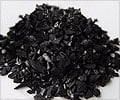Crops with deeper roots could help bring down the atmospheric carbon dioxide levels, says a leading University of Manchester scientist.

In principle, any crops could be treated in this way, giving more productive yields while also being better for the environment.
Although the amount of carbon presently sequestered in the soil in the natural environment and using existing crops and grasses has been known for some time, Professor Kell’s new analysis is the first to reveal the benefits to the environment that might come from breeding novel crops with root traits designed to enhance carbon sequestration.
Professor Kell, Professor of Bioanalytical Science at the University as well as Chief Executive of the Biotechnology and Biological Sciences Research Council (BBSRC), has also devised a carbon calculator that can show the potential benefits of crops that burrow more deeply in the ground.
With this, he has calculated that – depending on the time it takes them to break down –breeding crops that could cover present cropland areas but that had roots a metre deeper in the soil could double the amount of carbon captured from the environment. This could be a significant weapon in the fight against climate change.
The soil represents a reservoir that contains at least twice as much carbon as does the atmosphere, yet mainly just the above-ground plant biomass is harvested in agriculture, and plant photosynthesis represents the effective origin of the overwhelming bulk of soil carbon.
Advertisement
Professor Kell argues that widespread changes in agricultural practice are needed, in an environment in which edible crop yields also need to increase substantially and sustainably, and where transport fuels and organic chemicals will need to come from modern (rather than fossil) photosynthesis.
Advertisement
Source-Medindia








